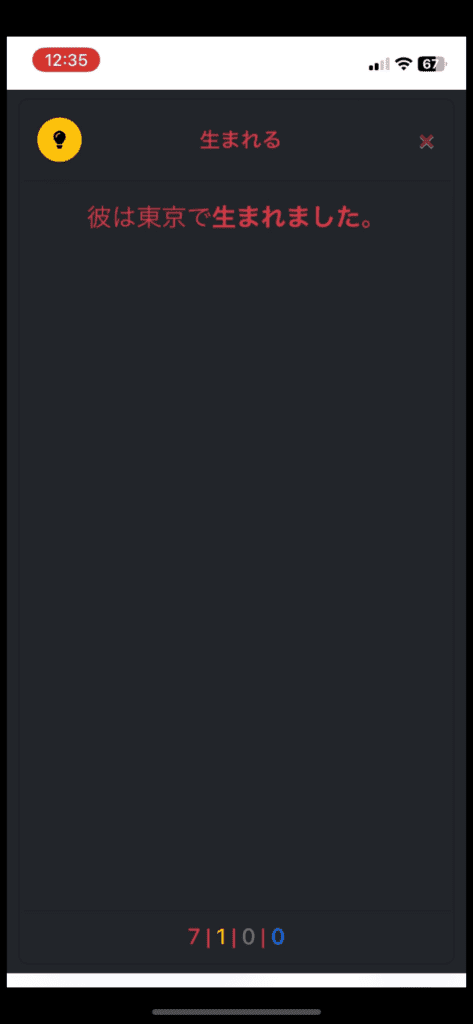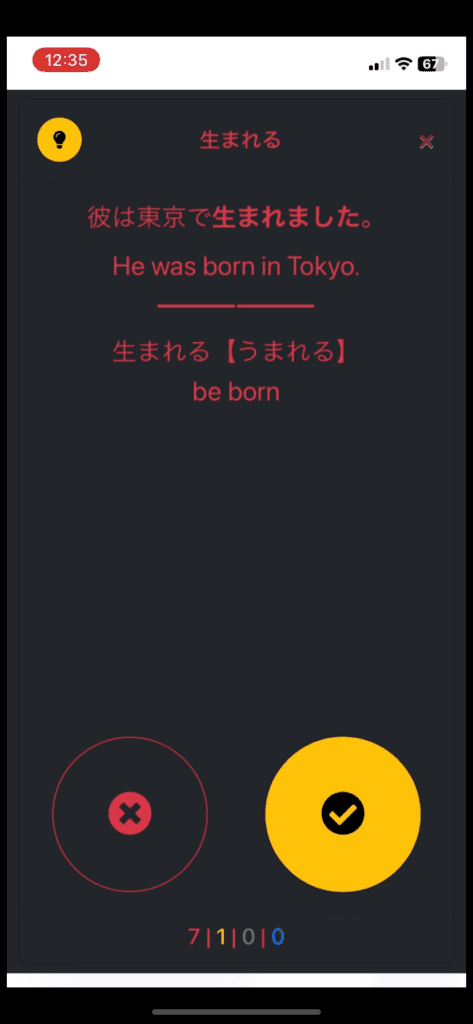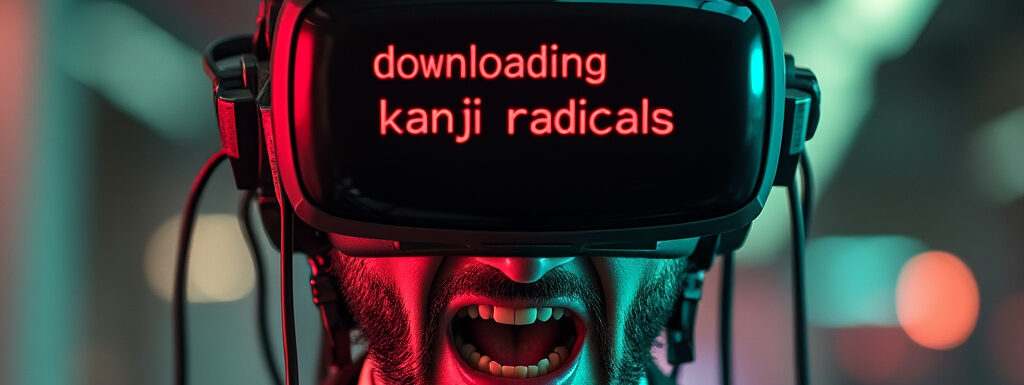Studying for recognition vs. reproduction and making use of mnemonic associations.
Know Your Language-Learning Goal
Many people who try to study Japanese fail, at least on their first attempt. And they are often lucky if they can walk away with their desire to learn Japanese intact.
So why is learning Japanese so difficult?
Part of it is the inherent difficulty of learning a language that has no relation to any other language you know. But a large part is inadvertently spending time on things you don’t care about.
It’s all too easy to subject yourself to unnecessary pain and waste your time when you start learning Japanese because there is so much you could be studying and your goal in learning Japanese may not be well articulated.
Do you need to study the 2000+ kanji—the Chinese characters adapted for written Japanese? Should you memorize the most common 6000 vocabulary words? And what about immersion?
Jumping into any of these activities without knowing why is a recipe for disaster. So how do you avoid unnecessary study?
The answer is to understand your goal and keep it in mind.
Ask yourself: what language skill—reading, writing, listening, or speaking—is your priority?
By keeping your language-learning goal in mind, you can avoid making learning Japanese harder than it needs to be.
For instance, Heisig’s Remembering the Kanji is a book focused on teaching you how to write kanji, not how to read kanji. So if your priority is to read Japanese, you’ll know that using Heisig’s book may not be a good use of your time.
Similarly, you’ll find that keeping your goal in mind allows you to filter the language-learning advice you encounter.
Many Youtubers, like Vaughn Gene, give advice on how to learn Japanese.
But while Vaughn gives a lot of great advice, you can see that it is focused on learning how to speak Japanese. So if your goal is learning to read Japanese, following Vaughn’s advice can waste your time.
Keeping your language-learning priority in mind keeps you focused.
And focus is key to avoiding work that doesn’t move you closer to your goal.
If you are like most people, you already know the skill that you want to prioritize. But if you’re not sure what skill you should focus on, choose the one that excites you the most.
But beware that some skills require far more effort to develop than others.
Output Requires More Work Than Input
Output (speaking and writing) requires a much more intensive study than input (e.g., listening and reading).
This is natural because input involves recognition while output requires reproduction.
In the same way that it is easy to recognize a picture of your beloved pet cat, but it is hard to draw a picture of her from memory, output requires a higher degree of mastery. And developing output-level mastery requires more time and effort.
It’s one thing to recognize a word you’ve heard before in the context of a larger discussion. But it’s an entirely different thing to be able to produce that word on command when you need it.
Developing output-level mastery is not easy, and often requires a painful process of “practicing” reproduction such as by repeatedly speaking words aloud, writing kanji out by hand, and drilling grammatical structures until they are second nature.
Sure, you can drill sentences hundreds of times and create mnemonic associations for thousands of words like Vaughn did to speak Japanese, even if speaking is not your primary goal.
But these efforts are generally overkill if your focus is reading or listening.
Mnemonic Associations
Mnemonic associations are memory tricks that help you remember something by making associations between information. Mnemonic associations are highly effective at helping you reproduce information that you are trying to learn.
Take kanji. It is often hard to write kanji from memory because kanji are complex (e.g., 霧, 鬱, etc.) or because they are similar to other kanji (e.g., 剤, 済, 斉).
This is where mnemonic associations can help.
Kanji are made up of repeatable components known as “radicals.” For instance, 剤 has two radicals: 斉 +刂 = 剤. If you learn to associate a word with each kanji radical as well as the combined kanji, then you can memorize a story that links these words to remember how to reproduce the kanji stroke-by-stroke.
You can see how this works for 剤 from the WaniKani website:

By remembering the mnemonic story, you can recall the correct radicals (simultaneous + knife) and reproduce the kanji correctly.
While mnemonic associations are great if your goal is to write kanji, they are largely a waste of time if your goal is to read Japanese, which only requires that you recognize words that use kanji.
However, you will invariably find that there are certain words that you just can’t seem to remember despite looking them up over and over again. When this happens, taking the time to create a mnemonic association can help anchor these “troublemakers” into your memory and make them stick.
In fact, doing so will save you time in the long run—it’s much more efficient to put in a few extra minutes to create a mnemonic association to avoid forgetting the same word week after week.
But how do you know when you need to create a mnemonic association? The trick is to track your study so you know when you are struggling to learn a word.
How to Track “Troublemakers”
There are many ways to track words you are struggling to learn. Perhaps the most straightforward way is to write down every word you look up and note each time you look it up again.
But this record-keeping task is painful and inconvenient if done by hand, and is a place where language learning apps shine.
Many dictionary apps will track if you’ve looked up a word before. But they often do not track the number of times you’ve had to look up the same word.
Fortunately for you, there is a solution: the Ashiba app tracks how many times you “forget” a word and lets you know when it’s time for you to create a mnemonic association.
If you have learned a word or kanji and forgotten it five times, the Ashiba app will automatically flag it as an “Akuma” card, and its appearance will forever change to a black background with red text, as shown by the card for 生まれる below:

When you see an Akuma card come up for review, you will be alerted that you are struggling to learn it because it is displayed in black and red. So when you see a black and red card show up, you will know that it’s time to create (or recall) a mnemonic.


Note on tracking troublemakers with other SRS apps.
Having a tool that automatically tracks your “troublemakers” is one of the many reasons I created the Ashiba app as a standalone SRS, because none of the other popular SRS apps did this properly.
WaniKani. There is no native feature in WankiKani that tracks cards you are struggling to remember.
Anki. Anki flags cards you are struggling to remember as “leeches.” Instead of changing the appearance of a “leech,” Anki will suspend a leech so it leaves the study queue (i.e., you won’t review it again). The rationale is that leeches require too many reviews and waste your time so it’s best to avoid them. This behavior is well-intentioned but misguided—the solution is not to give up on learning a card you are struggling with, but to give it more attention.
Bringing It All Together
Whether you use the Ashiba app or not, be sure to track your troublemakers and create mnemonic associations only when you are struggling to remember a word. Unless your goal is output, mnemonic associations should be the exception, not the rule.
So beware if you are using Heisig’s Remembering the Kanji or WaniKani and your goal is input. Both of these tools require you to study kanji radicals and learn a mnemonic association for every. single. kanji.
This is great if you want to write kanji by hand. But these efforts are unnecessary if your goal in studying kanji is to read Japanese.
There is only so much unnecessary pain you will be able to take before you burn out your desire to learn Japanese.
So be sure to keep your language-learning goal in mind and check if your efforts are aligned with the skills you want to develop.

